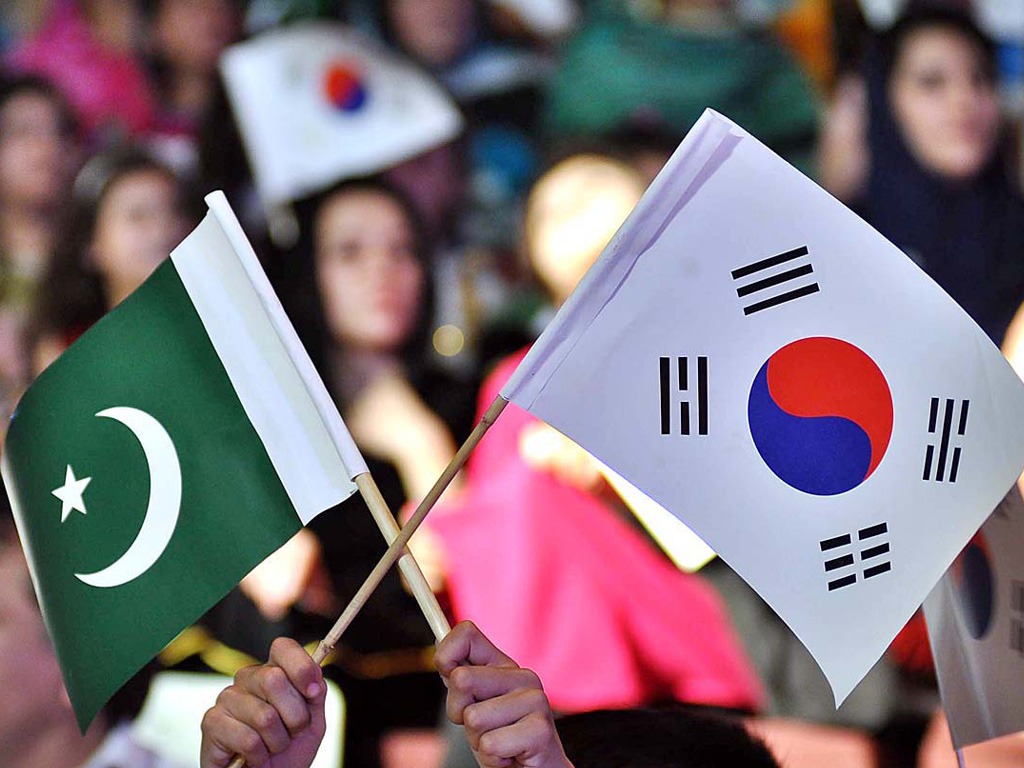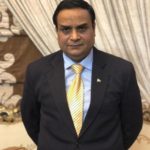
Dr. Mehmood Ul Hassan Khan has specialties in management, marketing, economics and governance. He has also master degree in Development with specialization in Diplomacy and Public Relations. He has also a rich experience in research, peace and conflict resolution and defence issues. His research and comprehensive articles have already been published in China, Uzbekistan, Iran, Turkey, Azerbaijan, USA, South Korea, UAE and Kuwait too.
He has great experience in the socio-economic, geo-politics and geo-strategic issues of Central Asia, Caucasus and Middle East. He is a famous expert on CIS and Caucasus in Pakistan. Member Board of Experts: CGSS, Islamabad. Ambassador at large at IHRFW.
The South Korea has long been a role model for other regional as well as developing economies. It is now increasingly becoming one for more advanced economies like the United States and the UK.
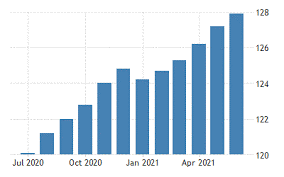
Series of published reports of the World Bank, IMF, ADB and many other regional credit agencies indicated that the Republic of Korea has achieved remarkable success in combining rapid economic growth with significant poverty reduction.
South Korea has experienced one of the largest economic transformations of the past 70 years. It started as an agriculture-based economy in the 1960s,and it became the 10thlargest economy in the world in terms of gross domestic product (GDP) in 2018.
Many research studies attribute South Korea’s structural transformation to policy reforms aimed at opening the country to foreign markets. Its export-oriented policies are one of the most important factors of its economic success. South Korea is now one of the top 10 exporters in the world, and its exports as a percentage of GDP increased from 25.9 percent in 1995 to 56.3 percent in 2012 which shows total economic transformation from poverty to sustainable prosperity.
Two additional factors have contributed to the increase in international trade and industrialization in South Korea is improvement in the business environment, policies incentivizing investment in innovation. Moreover, a strong business environment fosters growth in the domestic market and attracts foreign investors. According to the World Bank, South Korea is ranked No. 4 in terms of the overall Ease of Doing Business (DB) index in 2018-2019.
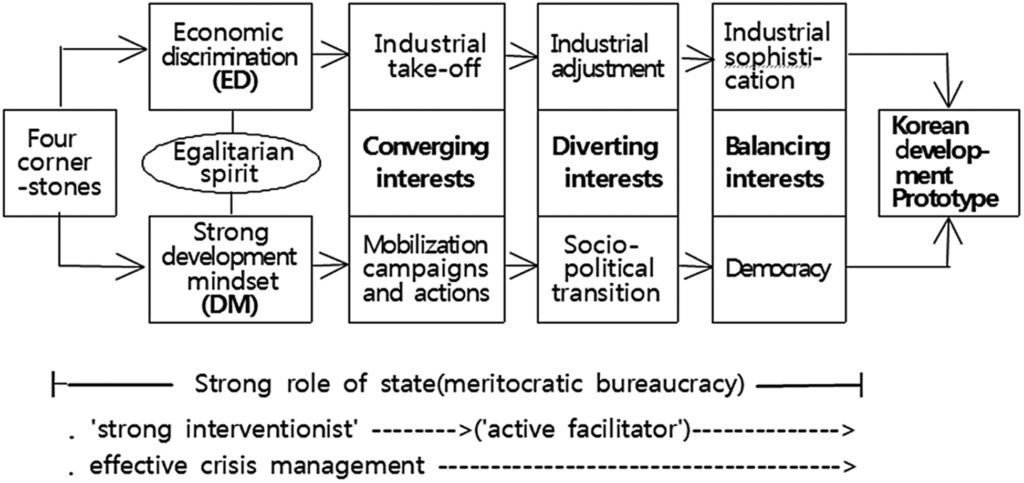
South Korea is one of economic wonders of the late twentieth century. War-torn desolated and poverty stricken country in the 1950s with a per capita income less then Haiti, Ethiopia, India or Yemen, achieved unprecedented economic development and legendary growth that brought it from one the most backward countries into an economic giant by the 1980s and later on one of the most advanced countries in the world in the 21st century. The process was characterized by rapid industrialization, phenomenal growth rates and incremental social transformation.
Critical analysis of the statistic data of numerous published reports of the World Bank, IMF, and ADB clearly indicate that despite all hardships it succeeded to achieve and maintain a sustainable economic development of 8.9 percent for 19 years (1961-1980) and expanding the nominal size of the economy by more than 100 times in 30 years is unparalleled in the world. In 1990, nearly 30 years after launching the 1st five-year plan in 1961, GNP was 113 times that of 1961 while per capita GNP had grown 68 times. Immense economic prosperity even further democratized the country due to which its political economy and system remained strong and stable.
South Korea became the first country after the World War II to transform from aid recipient to a donor country and from the very backward country (155,6 USD GDP/capita in 1960) to one of the most advanced countries in the world with over 27221 USD GDP/capita in 2015.
Korea is the world 6th biggest exporter, the 4th strongest economy in Asia and the 11th globally. It has become world biggest semiconductor and smartphone producer, second biggest in ship building, fifth in car and sixth in steel production. Innovations are becoming the moving driver of the economy with 4.3 percent GDP investments into R&D that is the biggest among OECD countries.
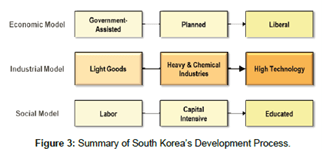
Moreover, under the leadership of the Park Chung-hee regime (1961-1979) South Korea adopted a comprehensive, accommodative, innovative and friendly Developmental State System (DSS) having numerous effective public policies facilitated rapid economic development in the country.
It succeeded to develop certain standardized characteristics, such as befitting and appropriate strong state intervention, functional and competent bureaucracy, good governance, people and business friendly policies focused on industrialization, diligence among the people for economic growth, Confucian cultural background, informal networks, export-oriented industrialization strategy, strong leadership and political stability.
Its splendid economic growth was a result of its unique economic governance structure and of institutional innovation that lowered transaction costs and expanded trade and markets, allowing Korea to gain great economic benefits. It established powerful bureaucratic institutions, such as Economic Planning Board and policy of implementation was effective which effectively initiated and implemented integrative mechanism of macroeconomic stabilization, liberalization and the transition to an export promotion strategy of industrialization
Initially, its macro-economy was driven by foreign aid which was primarily invested on the development of physical and human capital infrastructures which served as the basis for subsequent industrial development.
Gradually, Korean export based industrialization started 1961. For the next twenty years, the state guided strategy of massive industrialization through the development of a powerful export machine worked well. In this connection, capital intensive heavy and chemical industries were built in the 1970s provided basis for further industrialization during the 1980s.
Favorable developments in the overseas trade climate in 1980s together with price stabilization and surge of investment accompanied the rapid rise of industrialization. By the early 1980s South Korea had emerged as one of the leading newly industrialized country in Asia together with Singapore, Hong Kong and Taiwan.
The government of Korea’s policies resulted in real gross domestic product (GDP) growth averaging 7.3 percent annually between 1960 and 2019 which has been consistence, constant and composite. In this connection its strong socio-economic performance was fueled by annual export growth of 16 percent on average from 1961-2019. Savings and investments increased to 34.7 percent and 29.8 percent of GDP respectively.
Precisely South Korean phenomenal economic transformation is indeed a living miracle on the Han River which enabled a poverty stricken nation to proceed further from ashes or from rags to riches. South Korea has not only grown; it has also climbed the economic ladder by embracing technology. Now it is a technologically intensive society, and that has almost certainly made a difference in the context of the pandemic, particularly when it has come to monitoring localized risks and containing the spread of the virus
According to latest reports (2021) its real GDP is projected to increase by 3.8 percent and 2.8 percent in 2021 and 2022, respectively. Strong export growth, rising investment and expansionary macroeconomic policy are boosting the economy.
Its successful model of combating against COVID-19 seems to have shown the way to mitigating both the health and the economic fallout of the coronavirus pandemic.
According to latest OECD (2020-2021) reports, it is looking at a mere 1 percent GDP contraction for 2020, the second-best performer among major economies behind only China. In contrast, the euro area is expected to shrink by around 8 percent, and the United States could see full-year contraction on the order of almost 4 percent of GDP.
South Korea escaped relatively unscathed economically starting with its highly effective management of the pandemic in the first place. On its part, it quickly initiated a fairly aggressive fiscal response, pouring around $12.2 billion, or about 0.7 percent of the country’s GDP, to businesses and common people. It is also continuing to provide support in the form of loans and guarantees totaling about $230 billion.
Last week, it announced its fourth round of stimulus adding an additional $6.5 billion, and its policymakers pledge that expansionary approach will likely continue through next year to combat the lingering economic impacts of the pandemic
Its Central bank expects South Korea’s economy to manage a modest recovery this year driven by exports. But it says it would take a longer time for the job market to recover from the damage to services industries such as restaurants and transportation.
The bank since March last year has maintained its policy rate at an all-time low of 0.5 per cent to help pump money into the economy. But it seems that traditional financial tools aimed at lowering borrowing costs have had only limited effect during the pandemic that has damaged both supply and demand.
It remained one of the major recipients of aid but rigorous structural reforms has transformed into a dynamic country which later became a member of the Development Assistance Committee (DAC) of the Organization for Economic Cooperation and Development (OECD) in 2009. Interestingly, Korea’s gross national income (GNI) per capita increased rapidly from US$67 in the early 1950s to over US$30,000 IN 2018-2019 which vividly reflected its economic transformation, diversification and export orientation since 1950.
Now Korea is a key development partner of the World Bank Group and since 1977, an important contributor to the International Development Association (IDA), the World Bank’s fund that supports the world’s poorest countries.
Today its unique, indigenous, holistic and comprehensive development experience inspires many developing countries in sustainable development, provision of infrastructure and better services to improve the lives of the common people, and transition to a dynamic knowledge economy. It has now become of icon of knowledge base smarter economy. In 2015, Korea established a target to expand its official development assistance (ODA) to gross national income (GNI) ratio to 0.2 percent by 2020 and 0.3 percent by 2030 and has since been continuously increasing its ODA volume which showed its valuable services towards achieving equitable development in the world.
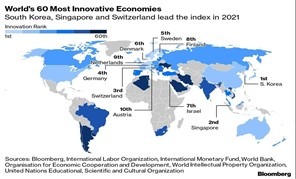
Now through constant and rigorous structural reforms Korea has become global innovation and technology hub and will help developing countries adopt innovative and technology-enabled development solutions and support green growth innovations for sustainable development. In this context, it arranged Global Innovative Growth Forum in 2019, and the Korea Innovative Week 2020 showcased its real potential of advanced technologies, Artificial Intelligence (AI) and integrative mechanism and modules.
Since the outburst of deadly COVID-19 (coronavirus), the Korea has been working with many regional countries to share its expertise and experience, particularly in the use of innovative and technology-enabled solutions to respond to the pandemic. It has a successful model of crisis management which it used effectively against the ongoing COVID-19.
Pakistan and South Korea share somewhat similar historical backgrounds, both emerging on the map in the late 1940s as economically poor and agricultural-based countries depending heavily on foreign assistance.
Bilateral diplomatic relationship between Pakistan and South Korea got momentum since the 1980s. The relations between two Asian states have been drastically improved.
Most recently, while talking to Korean delegation of the Department of Rural Development and Administration (DRDA) Prime Minister Imran Khan hoped that Pakistan and South Korea will work together to fully realize the immense potential existing in diverse fields for further deepening the overall bilateral cooperation.
He termed agriculture the mainstay of Pakistan’s economy and especially considered its role in rural development. He appreciated experiences and technology of the Korean side in the field of agriculture that would help in achieving food security and also improving the overall income of the small-scale farmers in the country.
He commended the role of DRDA in the development of crop specific agricultural technologies, provision of training and capacity-building of the researchers and farmers, and supporting sustainable development of agriculture sector in Pakistan.
He lauded the importance of cooperation between Pakistan and South Korea in diverse fields and reiterated his country’s continuous and firm support to the country in agriculture sector and rural development.
Pakistan was designated as a “priority partner” for the Korean Economic Development Cooperation. In the 10th round of Pakistan-South Korea bilateral policy consultations, the two countries agreed to enhance bilateral economic cooperation in all fields especially in the spheres of trade, investment, education, culture and parliamentary exchanged.
South Korea is keen to establish a cultural and religious institution in Taxila and expressed optimism that a large number of followers of Budhism would love to come to Pakistan and visit, or even stay for a while at Taxila, the cradle of Budhism, which has a lot to offer.
Korean embassy in Islamabad is going to inaugurate a ‘Technical Center’ in Islamabad in collaboration with the Pakistan government which would definitely further enhance technical education, vocational training and cooperation between two countries.
According to overseas bureau (2020) there are some 14,000 Pakistanis are working in South Korea including workers, businessmen and students.
Most recently, President Dr. Arif Alvi has underlined the need to further strengthen bilateral relations between Pakistan and South Korea in diverse sectors, including trade and economy. The President said that current volume of bilateral trade between the two countries was not commensurate to the true potential and stressed the need for pro-active measures to increase its quantum. The President desired to have investments from Korean companies and entrepreneurs in various sectors like mining, agro-industry and in the industrial and IT sectors, etc.
According to latest published reports of World Bank & IMF, South Korea exported $893M to Pakistan. The main products that South Korea exported to Pakistan are Refined Petroleum ($69.6M), Cars ($61.9M), and Synthetic Coloring Matter($46.6M). During the last 24 years the exports of South Korea to Pakistan have increased at an annualized rate of 3.88 percent, from $358M in 1995 to $893M in 2019.
Moreover, in 2019, Pakistan exported $378M to South Korea . The main products that Pakistan exported to South Korea were Refined Petroleum ($156M) and Light Pure Woven Cotton ($32.3M). During the last 24 years the exports of Pakistan to South Korea have increased at an annualized rate of 1.47 percent, from $267M in 1995 to $378M in 2019.
Being prominent regional expert I suggest that Pakistan and South Korea should rigorously work on further strengthening of bilateral relation in diverse fields of economy, trade, commerce, investments, joint ventures, IT, ICT, Artificial Intelligence, digitalization, education and culture. Even Special Economic Free Zones in CPEC should also be extended to South Korean investors and businessmen.
South Korea has specialties in innovations and advanced technologies which should be explored and tapped by policy makers and private sector of Pakistan. Even we can seek agriculture expertise of Korea to increase our agro-economy.
Close business-to-business and people-to-people contacts are the way forward. Diversification of exports, economic partnerships and rise to commercial diplomacy is the need of the hour. In this regard, free trade agreement would be a game changer.

